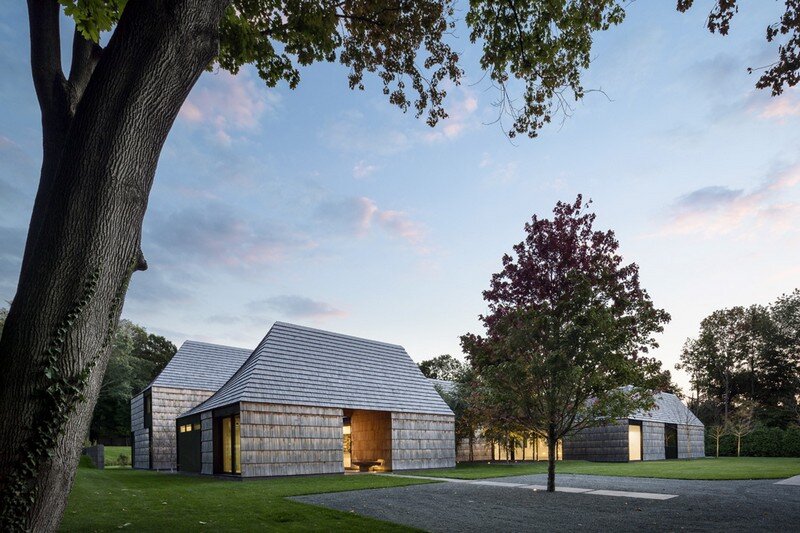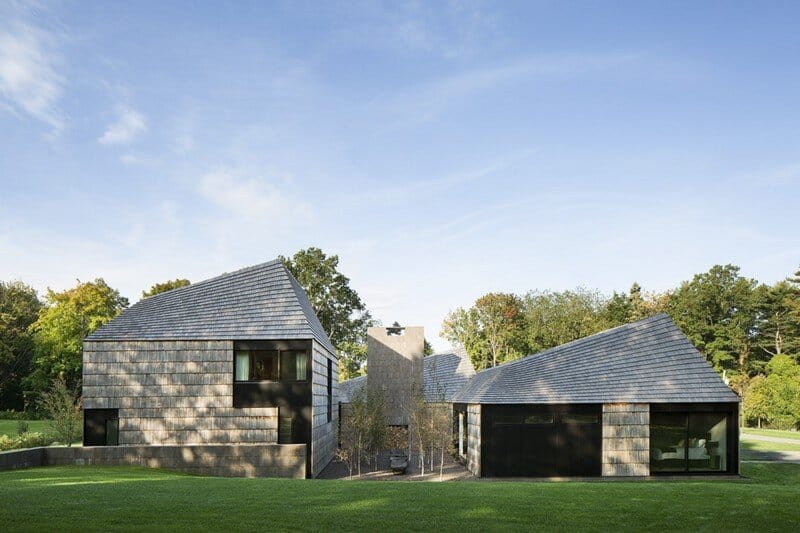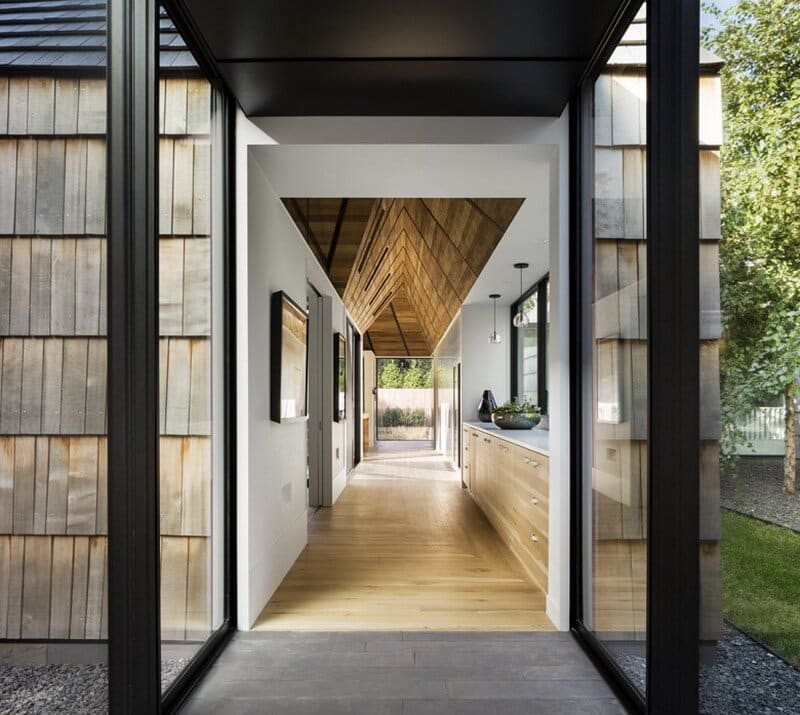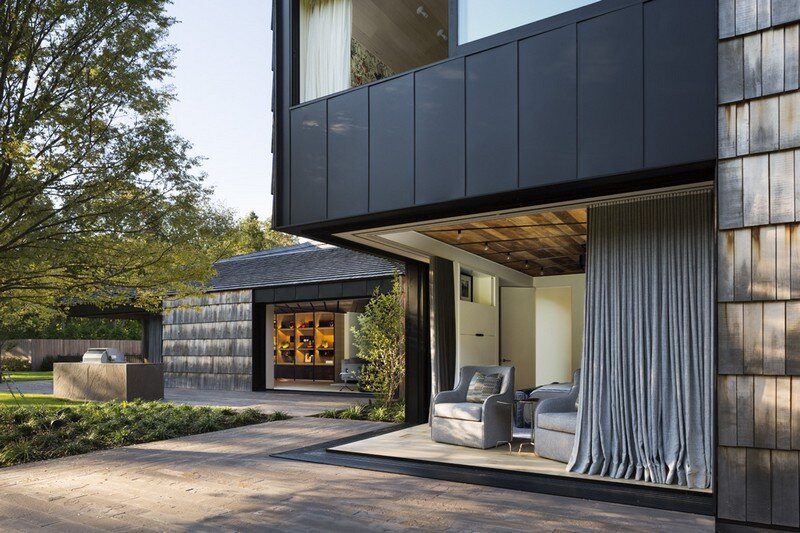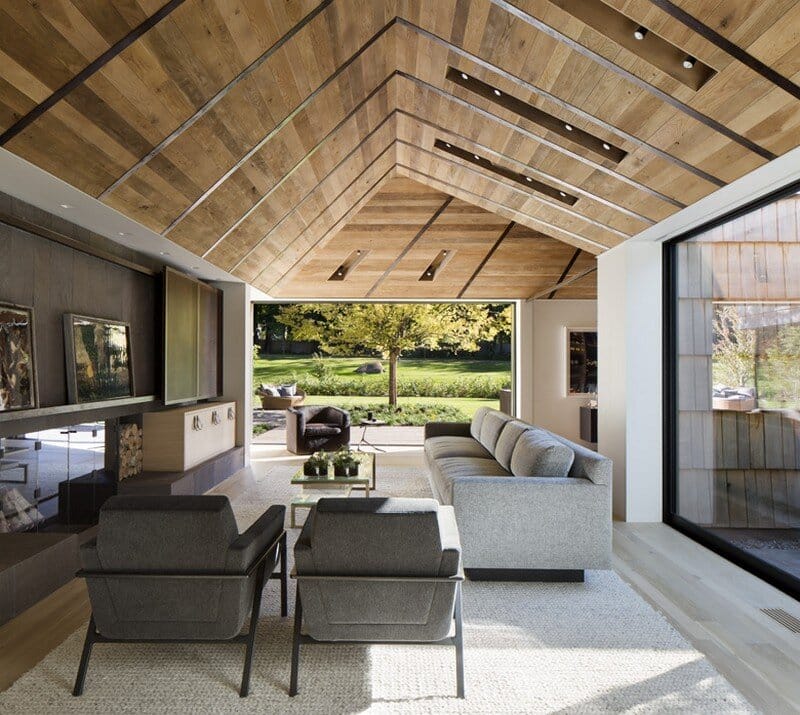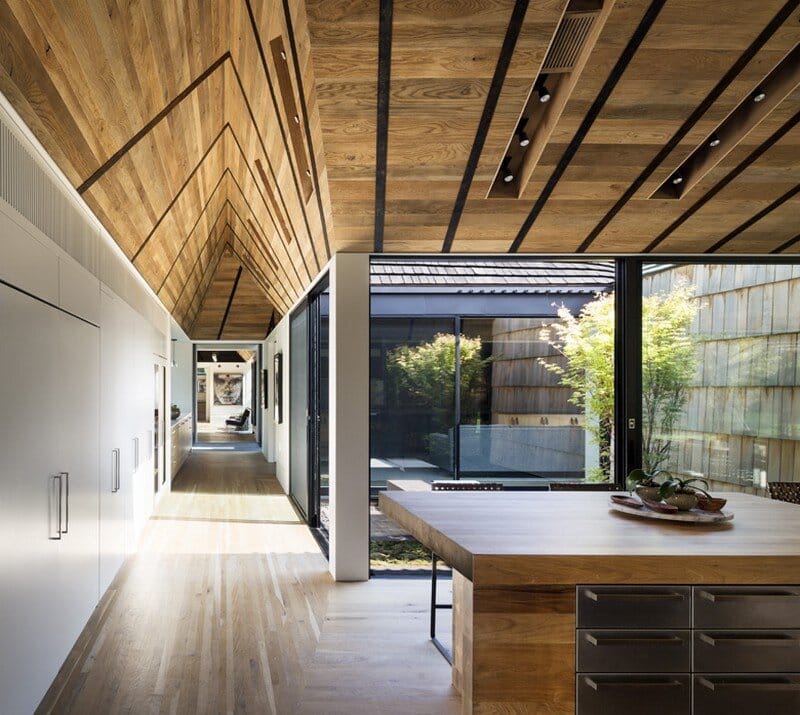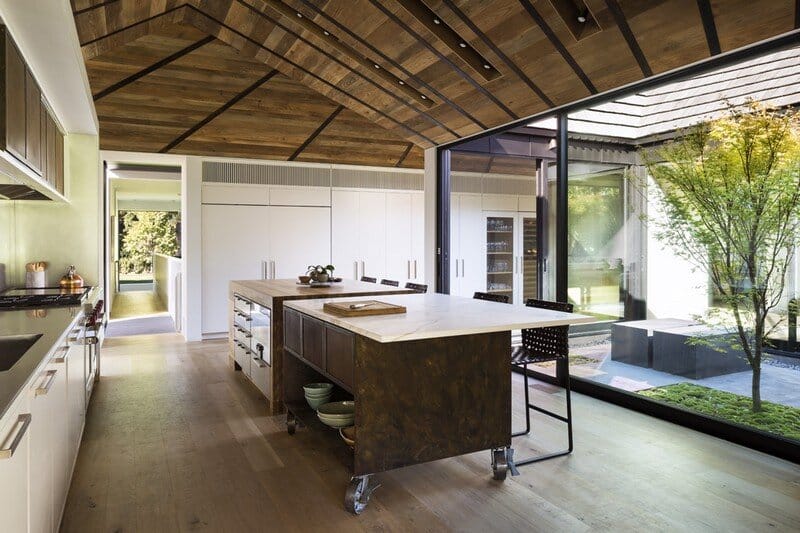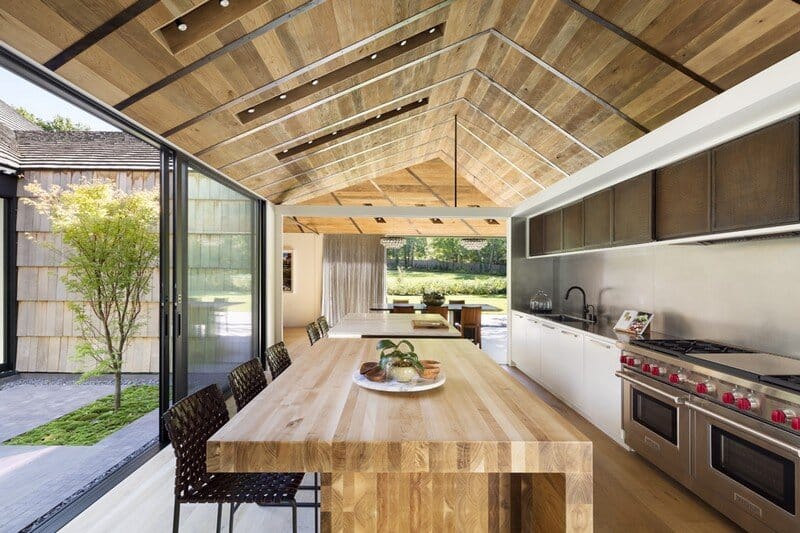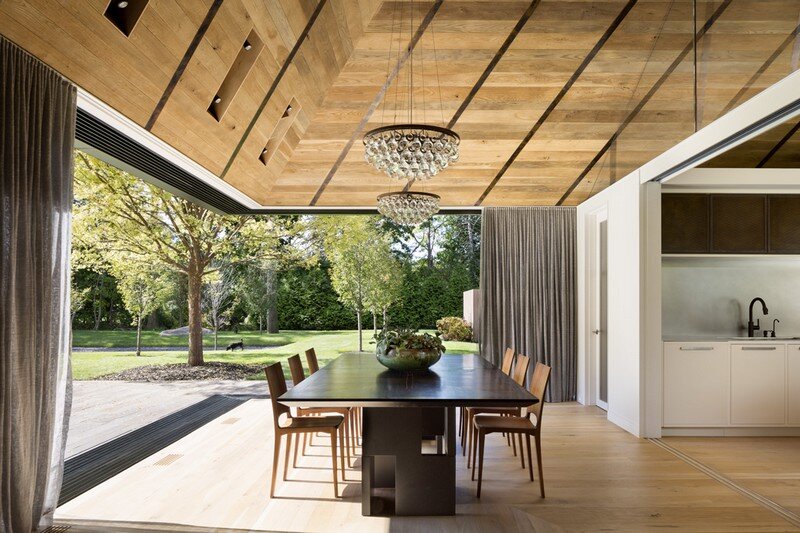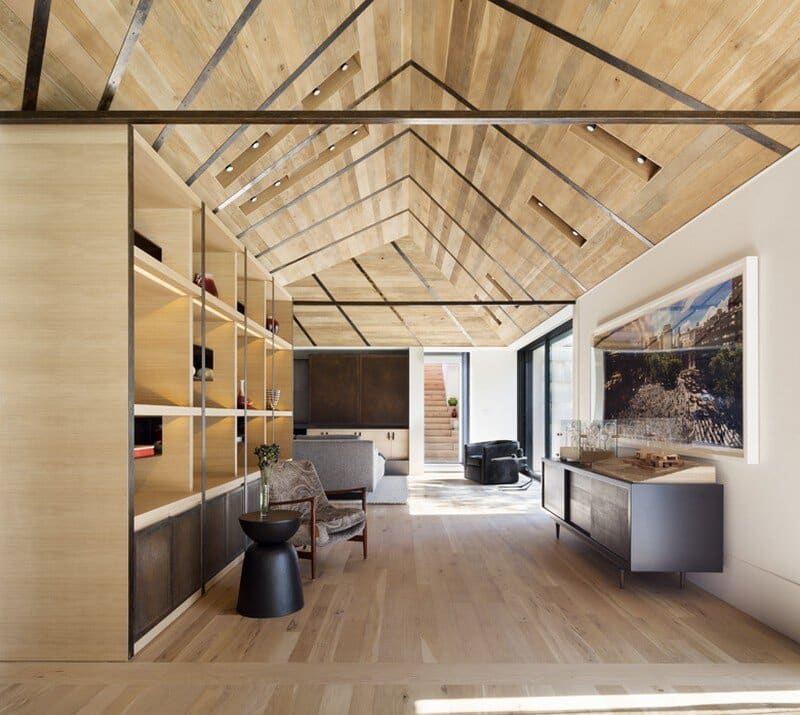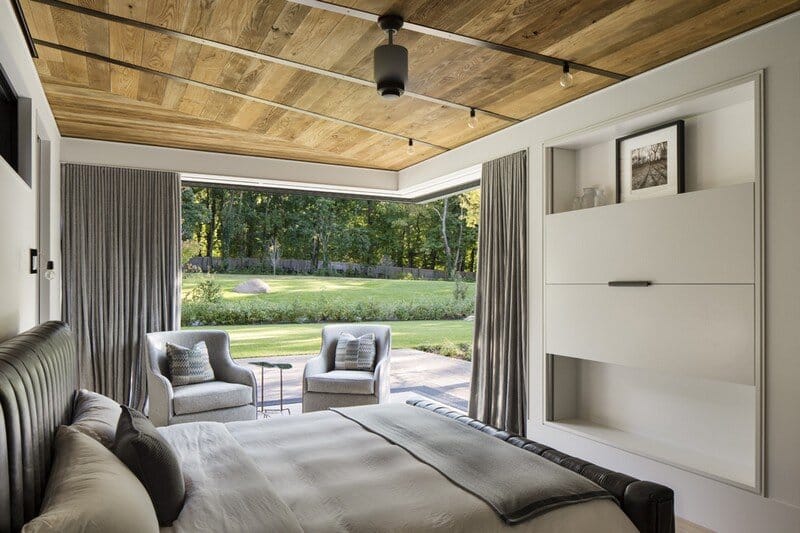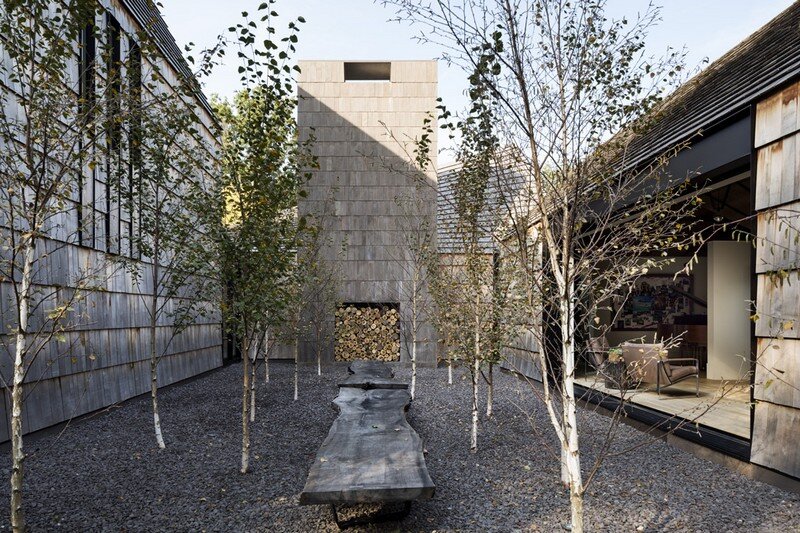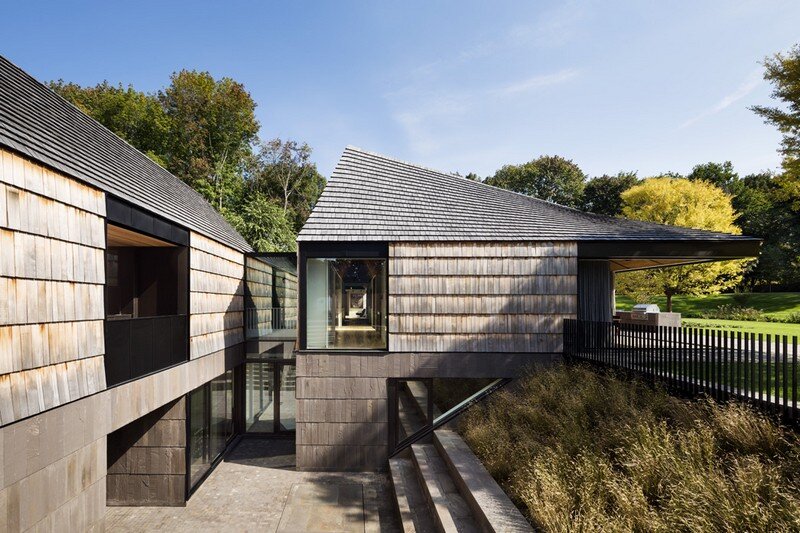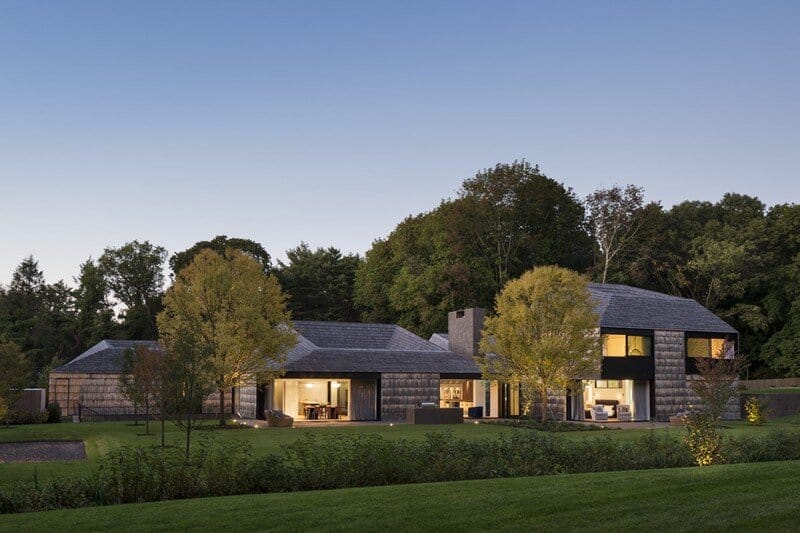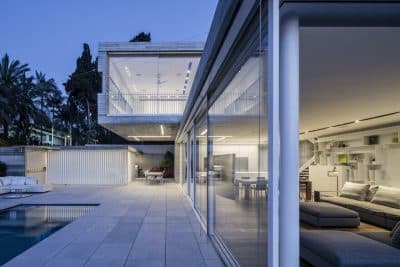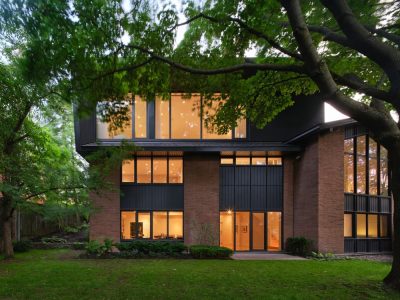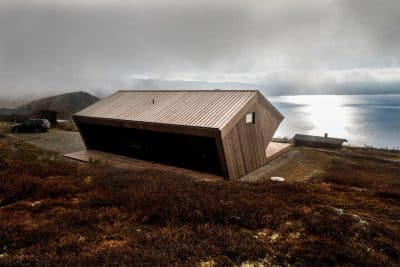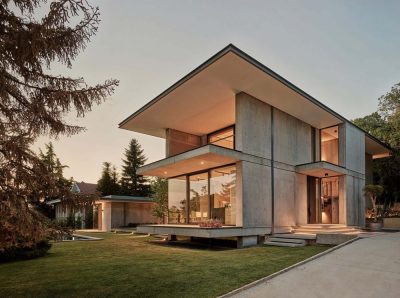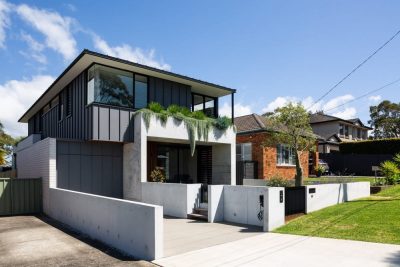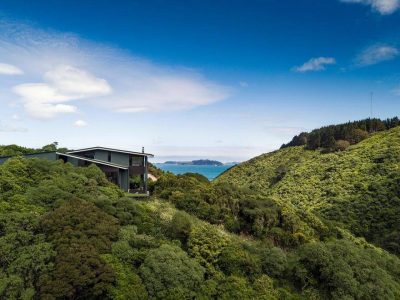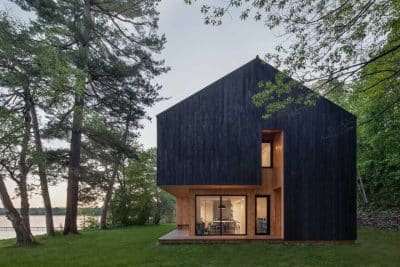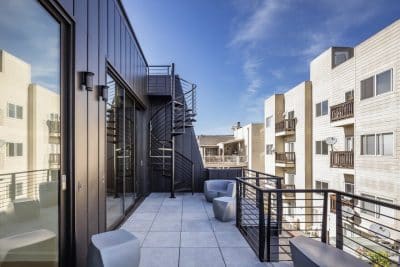Project: Underhill House
Architects: Bates Masi Architects
Building size: 6,340 sq. ft.
Location: Matinecock, New York, US
Photographer: Michael Moran
Contractor: Qualico Contracting Corp.
Landscape Architect: TL Studio
Inspired by the old Quaker settlements, Underhill House is a single-family home designed by Bates Masi Architects.
Project description: Socially and professionally a couple desired to live in an urban environment. However, living in the city didn’t afford the lifestyle they wanted for their children as they approached school age. To compromise between remaining close to the city while raising their family, they relocated to the suburbs. Their goal was to create a strong sense of place in an environment with close neighbors on all sides of their property. The history of the community they chose, an early Quaker settlement, inspired the solution. Based on the Quaker tenants of simplicity, humility, and inner focus, the Underhill house is broken into a series of modest gabled structures, each one focused inward on its own garden courtyard instead of out to the surrounding neighbors.
The simplicity of each courtyard distills the experience of nature, encouraging one to appreciate its subtleties. Every interior space is connected to the exterior on two sides. The layering of spaces from exterior to interior to courtyard collapses the boundaries between them. From selected vantage points, one may see across multiple spaces and courtyards to framed views beyond. Each volume has a sculpted roof that funnels light and air into the center of the structure.
The detailing of materials accentuates the central courtyard. The oak floor and weathered oak ceiling boards both radiate outwards from the center. The floor and ceiling boards are custom cut in width and mitered to trace continuously and concentrically around the courtyard. Weathered metal straps on the ceiling further emphasize this geometry and act as a device to organize lighting and audiovisual equipment throughout the house.
The idea of the pavilion is evident through several moves in the landscape. The building’s inverse form is carved out of the earth to create a lower courtyard at the basement level. Planted retaining walls slope down to let light and air into the lower level. Similarly, a sloped, depressed area forms a destination in the landscape, where a grove of trees grows, creating a contemplative spot much like the interior courtyards.
The shingle coursing and pitched roofs reference the early Quaker settlement buildings in the area. A limited number of materials are carefully detailed to accentuate the geometric form of each pavilion. A pronounced shadow line traces around each building and articulates the scale of the oversized shingles and undercoursing layer. On the roof, the shingles are an ideal material as they accommodate tapering courses that follow the roofs compound pitches. At areas below grade bluestone is cut to the same size and shape and applied in a shingled manner on the chimney to retain the uniformity of the volumes.
The Quaker values of simplicity and craft tie the new home to the community. Using the courtyard as a device to bring light and nature into the interior of each volume results in an inward looking and contemplative home that appeases the parents practical concerns and creates a desirable environment for the children’s upbringing.
Thank you for reading this article!

